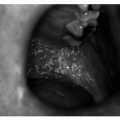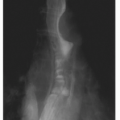Older individuals with mental health problems receive most of their health care in primary care settings.
Women in late age are more likely than men to present with anxiety disorders or late-onset schizophrenia.
Phobias may become more pronounced with aging, and can represent generalized anxiety or posttraumatic stress disorder.
The fragility of the autonomic nervous system in late age may enhance the anxiety response.
A late-onset delusional disorder unrelated to dementia may be a variant of schizophrenia.
Benzodiazepines have been overused in this population, and are often the cause of falls and confusion in the elderly.
Benzodiazepines with shorter half-lives are safer in older persons because they do not produce active metabolites, and are inactivated by direct conjugation in the liver.
Buspirone is well tolerated in the elderly.
Anxiety comorbidity in schizophrenia is often underdiagnosed.
Before prescribing and during the course of use with atypical antipsychotics, monitor for weight gain, and abnormal lipid and glucose levels.
In the management of anxiety and psychotic disorders, patient and family support and education are crucial.
in behavior as a consequence of organic disease, acute or chronic illness, medications, or alterations in the socioenvironmental milieu.4,5 Most older individuals with a psychiatric disorder present initially to their primary care physician rather than to a mental health professional.6,7 Primary care clinicians who are informed about the presentation and treatment of the more common mental health problems in this age-group will be better able to provide both the mental health and medical care so often needed. This chapter will discuss the primary care presentation and management of schizophrenia and anxiety disorder in the geriatric population. The goals are to provide an understanding of and an evidence-based approach to the presentation, recognition, and management of anxiety and schizophrenia in later life, and the effects of these conditions on health, behavior, and functional status.
TABLE 21.1 PREVALENCE OF PSYCHIATRIC DISORDERS AMONG YOUNGER VERSUS OLDER ADULTS | |||||||||||||||||||||||||||||||||||||||||||||||||||||||||||||||||||||||||||||||||||||||||||||||||||||||||||||||||||||||||||||||||||||||||||||||||||||||||||||||||||||||||||||||||||||||||||||
|---|---|---|---|---|---|---|---|---|---|---|---|---|---|---|---|---|---|---|---|---|---|---|---|---|---|---|---|---|---|---|---|---|---|---|---|---|---|---|---|---|---|---|---|---|---|---|---|---|---|---|---|---|---|---|---|---|---|---|---|---|---|---|---|---|---|---|---|---|---|---|---|---|---|---|---|---|---|---|---|---|---|---|---|---|---|---|---|---|---|---|---|---|---|---|---|---|---|---|---|---|---|---|---|---|---|---|---|---|---|---|---|---|---|---|---|---|---|---|---|---|---|---|---|---|---|---|---|---|---|---|---|---|---|---|---|---|---|---|---|---|---|---|---|---|---|---|---|---|---|---|---|---|---|---|---|---|---|---|---|---|---|---|---|---|---|---|---|---|---|---|---|---|---|---|---|---|---|---|---|---|---|---|---|---|---|---|---|---|---|
| |||||||||||||||||||||||||||||||||||||||||||||||||||||||||||||||||||||||||||||||||||||||||||||||||||||||||||||||||||||||||||||||||||||||||||||||||||||||||||||||||||||||||||||||||||||||||||||
the insane, which referred to schizophrenia-like symptoms and was due to tertiary syphilis.19
TABLE 21.2 DIFFERENTIAL DIAGNOSIS OF SCHIZOPHRENIA-LIKE SYMPTOMS AND ICD CODES | |||||||||||||||||||||||||||||||||||||||||||||||||
|---|---|---|---|---|---|---|---|---|---|---|---|---|---|---|---|---|---|---|---|---|---|---|---|---|---|---|---|---|---|---|---|---|---|---|---|---|---|---|---|---|---|---|---|---|---|---|---|---|---|
| |||||||||||||||||||||||||||||||||||||||||||||||||
Stay updated, free articles. Join our Telegram channel

Full access? Get Clinical Tree





